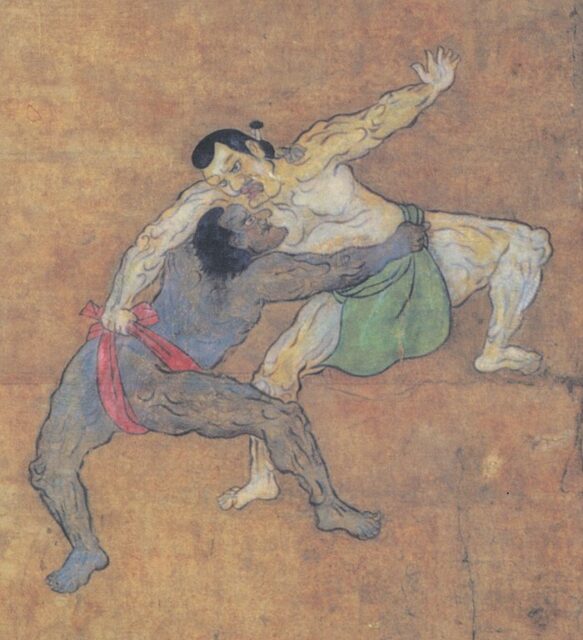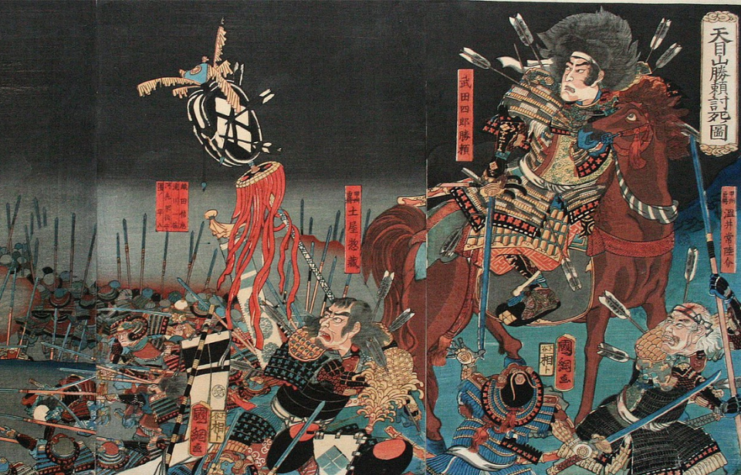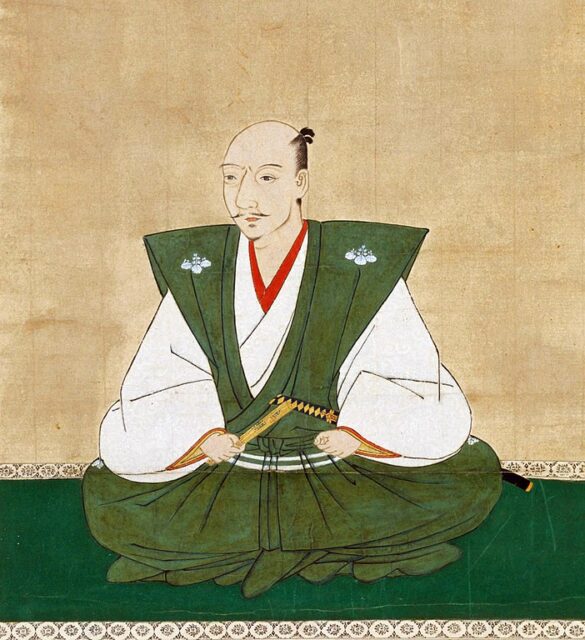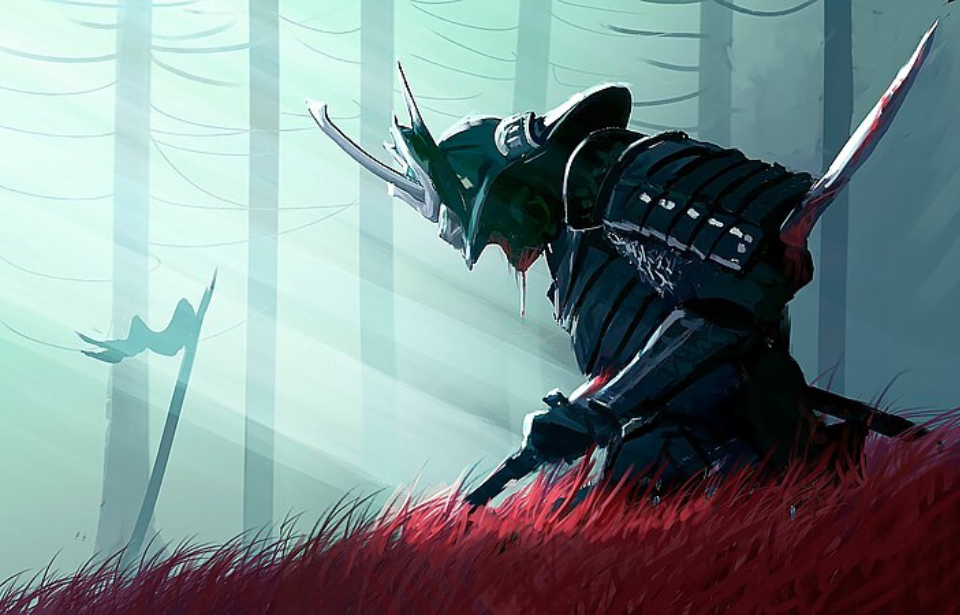In 2021, Netflix released the anime series, Yasuke. It’s based on the real-life African warrior who, after traveling to Japan, became a talented samurai and took part in fighting during the Sengoku period (1467-1568). While the six-episode show features fantasy elements, such as robots and magic, there is truth at its heart.
This is the true story of Yasuke, the legendary Black samurai.
Meeting an Italian Jesuit missionary

Yasuke’s early life is shrouded in mystery. Historians have suggested he was born in either Mozambique, Ethiopia, South Sudan or Nigeria. Some believe he was enslaved as a child. If so, he would’ve been a free man upon meeting Italian Jesuit missionary Alessandro Valignano, who likely employed him as a sort of unofficial bodyguard.
As historian Thomas Lockley explains, missionaries weren’t allowed to carry weapons, so as he traveled through India to Japan in the middle of a centuries-long civil war, Valignano would have needed some sort of protection. That being said, missionaries also weren’t supposed to have any soldiers or guards with them, so Yasuke, while armed, would’ve been a valet or some other kind of servant.
Other experts claim Yasuke was a warrior, which would explain why Valignano chose him. As Deborah DeSnoo, a filmmaker who worked on a documentary about the legendary samurai, explains, “It would have been impossible for Yasuke to rise to the rank of a samurai in just a year without a warrior background.”
Yasuke’s arrival in Japan

Yasuke arrived in Japan in 1579. Two years later, he and Alessandro Valignano traveled to Kyoto to meet daimyō Oda Nobunaga, from whom the latter would request permission to leave the country.
The series anime realistically depicts Yasuke’s introduction to Nobunaga’s court. When he first arrives, he’s ordered to be cleaned. When his skin color doesn’t change, he’s asked, “Did you ink your skin black?” He responds, “I was born with black skin.” This is accurate to what happened; Thomas Lockley explains that Nobunaga initially didn’t believe Yasuke’s skin was actually as dark as it was.
Nobunaga took an interest in Yasuke and welcomed him into his court. He was initially described in Nobunaga’s chronicle as “robust, black as a bull, and of fine character.” After their meeting, Yasuke became a sort of confidant for the lord. The two reportedly talked often, and since it’s unlikely that Nobunaga could speak Portuguese, it’s probable that Yasuke learned to speak Japanese.
Yasuke easily adapted to his new lifestyle. He was likely the only non-Japanese person in Nobunaga’s service, which is possibly a reason why the man took such an interest in him. Nobunaga gave him his own ceremonial katana, along with a residence.
A legendary samurai

It’s important to clarify what exactly a samurai is. Samurai were the hereditary military nobility in Japan between the medieval and early modern periods, dating from the late 12th century until the late 1800s. Each was a well-paid member of a landholder’s court, and their positions were highly prestigious.
Thomas Lockley explains that the idea of a samurai was a fluid concept, saying, “You don’t have to possess any particular killing skills to be a samurai. Anybody who took up weapons on behalf of a lord could technically call themself a samurai, or could be called a samurai.”
In his role as a samurai, Yasuke accompanied Oda Nobunaga into the Battle of Tenmokuzan. Following the engagement, which saw Nobunaga’s forces defeat those under Takeda Katsuyori, the former, along with Yasuke and his other followers, inspected the territory they’d taken from the Takeda clan.
Oda Nobunaga’s final moments

In June 1582, Oda Nobunaga was attacked by Akechi Mitsuhide’s army, who forced him to commit seppuku. This became known as the “Honnō-ji Incident,” as the lord took his own life in the Honnō-ji temple. This outcome wasn’t surprising, as Akechi had 13,000 men, while Nobunaga only had 30, one of whom was Yasuke.
Seppuku was a way of being in control of one’s own death. Instead of being killed by another, it was seen as Nobunaga’s final victory. The actual act saw him cut into his abdomen, and, to quicken the process, a kaishakunin cut off his head. According to tradition, Mori Ranmaru, one of Nobunaga’s attendants, acted as his kaishakunin.
Yasuke was in the temple at the time. After Nobunaga was dead, he was reported to have taken the lord’s head, so the enemy couldn’t do so. If Akechi had taken the body part, it would have served as a symbol of legitimacy. Yasuke, therefore, changed Japanese history with his actions that day.
On the same day, Yasuke joined the forces of Oda Nobutada, the son of Nobunaga. Thomas Lockley explains that, while Nobutada had 200 men, Akechi still had 13,000, so it’s unsurprising that the latter forced the former to also take his own life later that same day. Yasuke was likely wounded during the battle and was last reported to have been taken to a Jesuit house.
While Yasuke’s story is interesting, he wasn’t the only non-Japanese person to travel to the country and serve in such a position. People from China, Korea and Africa all traveled to and lived in Japan. The greatest difference between Yasuke and these men is that they served minor noblemen, while the legendary samurai served a famous and powerful lord.
More from us: The Subtle Philosophy Behind Staircases In Medieval Castles
After being wounded and taken to the Jesuit house, there are no more mentions of Yasuke, meaning the rest of his story is as mysterious as his early days.
